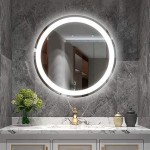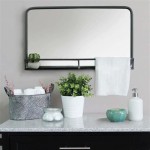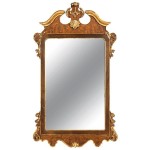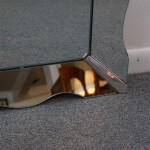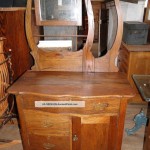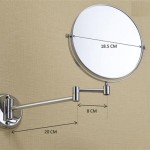How Do No Fog Mirrors Work?
Fog on mirrors, whether in your car, bathroom, or even on your eyeglasses, can be a nuisance. It obstructs your view, making it difficult to see clearly. No-fog mirrors, however, offer a solution to this common problem, providing clear visibility even in humid conditions. But how do these mirrors work their magic? What makes them different from regular mirrors? Let's delve into the science behind no-fog mirrors.
1. The Science of Fog Formation
Before understanding how no-fog mirrors work, it's crucial to grasp the science behind fog formation itself. Fog occurs when warm, moist air comes into contact with a cold surface, such as a mirror. The water vapor in the air condenses onto the cold surface, forming tiny water droplets that obscure the reflection. This phenomenon is known as condensation.
The colder the surface, the more likely it is to attract condensation, as the temperature difference fosters quicker condensation. In a bathroom, for instance, the steam from a hot shower cools as it encounters the cold mirror, leading to fog formation. The same principle applies to car mirrors on a cold, humid morning.
2. Techniques for Preventing Fog
No-fog mirrors employ various techniques to combat the issue of condensation by inhibiting the formation of water droplets on the mirror's surface. These techniques can be broadly categorized into two approaches:
2.1. Hydrophobic Coatings
One common approach is to apply a hydrophobic coating to the mirror's surface. Hydrophobic materials repel water. These coatings create a thin, invisible layer on the mirror's surface that prevents water droplets from sticking. Instead of forming a film of condensation, the water molecules bead up and roll off the surface, keeping the mirror clear. This technique is often used for car mirrors, as their surfaces are exposed to wind and rain.
2.2. Heating Elements
Another approach involves using heating elements. These elements are embedded within the mirror's surface and generate heat. The heat raises the temperature of the mirror surface, making it less susceptible to condensation. The warm surface discourages the water vapor from cooling and condensing, preventing fog from forming. This method is commonly used in bathroom mirrors and rearview mirrors in high-end vehicles.
3. Benefits of No-Fog Mirrors
No-fog mirrors offer a number of benefits, including:
- Improved Visibility: No-fog mirrors ensure a clear view, eliminating distractions and enhancing safety in situations like driving or showering.
- Enhanced Safety: Clear mirrors in cars are essential for safe driving, especially in inclement weather conditions. In bathrooms, they prevent bathroom fog from obscuring your reflection while you're shaving or applying makeup.
- Increased Convenience: No-fog mirrors eliminate the need to constantly wipe down mirrors, saving time and effort.
- Durability: Many no-fog mirrors are designed for long-lasting performance, offering a reliable solution to the fog problem.
No-fog mirrors are an innovative solution for a common problem. Their ability to prevent condensation through various techniques enhances safety, convenience, and overall user experience. Whether you're driving on a foggy morning or enjoying a hot shower, no-fog mirrors offer a clear view, making them a valuable addition to any home or vehicle.

What Are The Benefits Of An Anti Fog Mirror Victoriaplum Com

What Are The Benefits Of An Anti Fog Mirror Victoriaplum Com

How To Stop Your Mirror From Fogging Up Home Repair Tutor

5 Best Fogless Shower Mirrors Of 2024 Reviewed

3 Ways To Keep Mirrors From Fogging Up With Steam

How To Keep Your Car Mirrors From Fogging Up Motor Hills

What Are The Benefits Of An Anti Fog Mirror Victoriaplum Com

The Only Fogless Shower Mirror That Works

Three Easy Ways To Stop Your Bathroom Mirror From Fogging Up

What Are The Benefits Of An Anti Fog Mirror Victoriaplum Com

